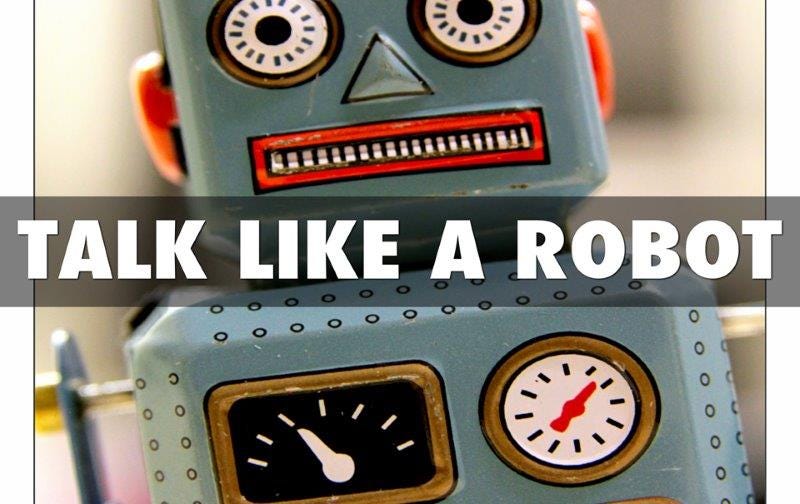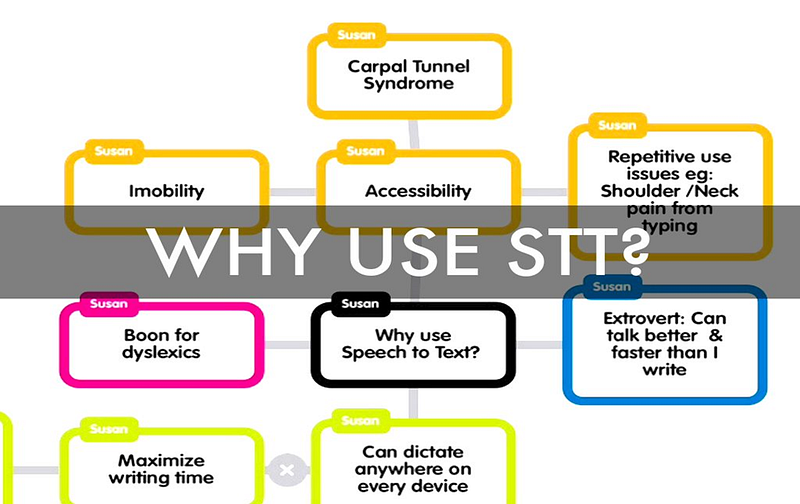Transform Your Writing: Embrace Speech-to-Text Technology
Written on
Chapter 1: The Power of Speech-to-Text
Have you ever felt a story bubbling inside you, only to be stifled by the daunting prospect of typing for hours? Many of us engage in written communication daily, whether it’s through social media, emails, or blog posts. The thought of sitting at a computer to express our ideas can feel overwhelming, especially when striving to meet a daily word count.
Instead of struggling through typing, consider utilizing speech-to-text software.
I am sure you've heard the advice to try speech-to-text for writing. In the past, the technology was not very effective, leading many to stick to traditional typing methods. However, I encourage you to give it another shot, and I’ll share some helpful tips to ease your transition to speech-to-text.
I first learned about speech-to-text as a tool for students with disabilities during my teaching career in the late 1980s. Back then, the technology was inadequate, time-consuming to train, and often ineffective for many students. However, everything changed when I got my first Palm phone equipped with speech-to-text capabilities—I was hooked.
E-mails and Texts Made Easy
A few years ago, while waiting for a delayed flight at an airport, I found myself buried in unread emails after a week of travel. Typing responses on my mobile device felt like a tiresome chore. Instead, I turned on the speech-to-text feature on my Palm and began speaking my replies. To my surprise, it worked flawlessly, capturing my words accurately even amidst the airport chaos.
I stood to the side of the gate, answering emails one after another, enjoying the process. After a while, an older gentleman approached me and remarked, “What are you doing? A group of us has been trying to figure out how you are speaking to your phone for the past half hour. You speak robot very well!”

I chuckled and explained that I was responding to emails using speech-to-text. I learned that enunciating clearly and adopting a “robotic” tone helped the software understand me better. Since then, I’ve effortlessly used speech-to-text for detailed email and text replies without any major issues, aside from curious glances from fellow travelers.
Section 1.1: The Immediate Impact on Writing
While I may sound robotic during dictation, my writing is anything but monotonous. In fact, it tends to be more conversational and engaging than if I were laboring over a keyboard.
Typing often leads to pauses for reflection, which can trigger self-editing and concern over grammar, punctuation, and consistency. Such worries can stifle creativity and dull the vibrancy of your narrative.

Writing can be grammatically perfect yet still fail to convey excitement or depth. By using speech-to-text, I can concentrate on articulating my thoughts without being distracted by the mechanics of typing. When I am passionate about a subject, that enthusiasm shines through in my spoken words, which may not happen when typing.
I can always refine my work later, but the initial anxiety of getting it down is lifted.
Subsection 1.1.1: Discovering Untapped Talent
Speech-to-text has opened doors for many who find traditional writing challenging, allowing their ideas to reach a broader audience. Once, only those adept at writing by hand or on a keyboard could share their stories. Now, brilliant thinkers, storytellers, and innovators can express themselves thanks to this technology.
Today, professionals from various fields—doctors, lawyers, businesspeople, and authors—are leveraging speech-to-text. After capturing their ideas verbally, proofreaders and editors help transform those spoken words into polished documents.

One inspiring example is my mentor, Fritz Bell, an exceptional educator. I often encouraged him to write a second book, but he disliked the writing process so much that he never did. At 80, he finally embraced speech-to-text, using it to compose operas!
Section 1.2: Tips for Effective Speech-to-Text
To make the most of speech-to-text, remember the advice I received about sounding like a robot. Many people have expressed frustration after trying this technology, claiming it failed to capture their words accurately. Often, they cite their accents or the software’s inability to interpret their speech.
Consider this: speech-to-text software is designed to comprehend a “computer accent.” To achieve the best results, you should adapt your speech to match this style, which many users have found beneficial.
The first video, "How to Dictate a Book: The ULTIMATE Guide," provides insights on mastering speech-to-text technology for writing.
Chapter 2: My Personal Journey with Speech-to-Text
The words you are currently reading were produced using Dragon Naturally Speaking. I no longer draft my books the conventional way. Instead, I dictate my first drafts, a method that has transformed my writing experience.
Previously, I wrote my first book by typing, a process that felt laborious and draining. Now, with speech-to-text, I find myself energized and focused on delivering my intended messages without the cumbersome task of typing.
The second video, "How To Use Dictation Software To Write Your Book," walks you through practical applications of dictation software for your writing projects.
Section 2.1: The Benefits of Speech-to-Text
Switching to speech-to-text has significantly improved my physical and mental well-being. I no longer experience discomfort from prolonged typing sessions or suffer from carpal tunnel syndrome.
Since clear enunciation is crucial for effective speech-to-text, I've adopted a standing desk, which encourages better posture. Even while traveling, I manage to set up a makeshift standing desk in hotel rooms.

The immediate positive impact on my mental state was substantial. Committing to this technology alleviated the stress associated with tedious typing and transformed my writing approach.
Give speech-to-text a chance! If your previous attempts were unsuccessful, try again. Dedicate two weeks to using your chosen software, allowing it to adapt to your unique voice and speaking style. You might be amazed at the progress you can achieve.
Extra: My Mentor's Late-Blooming Journey

Before you leave, please scroll to the bottom of the page and show your support with some claps. Your engagement helps others discover this content!